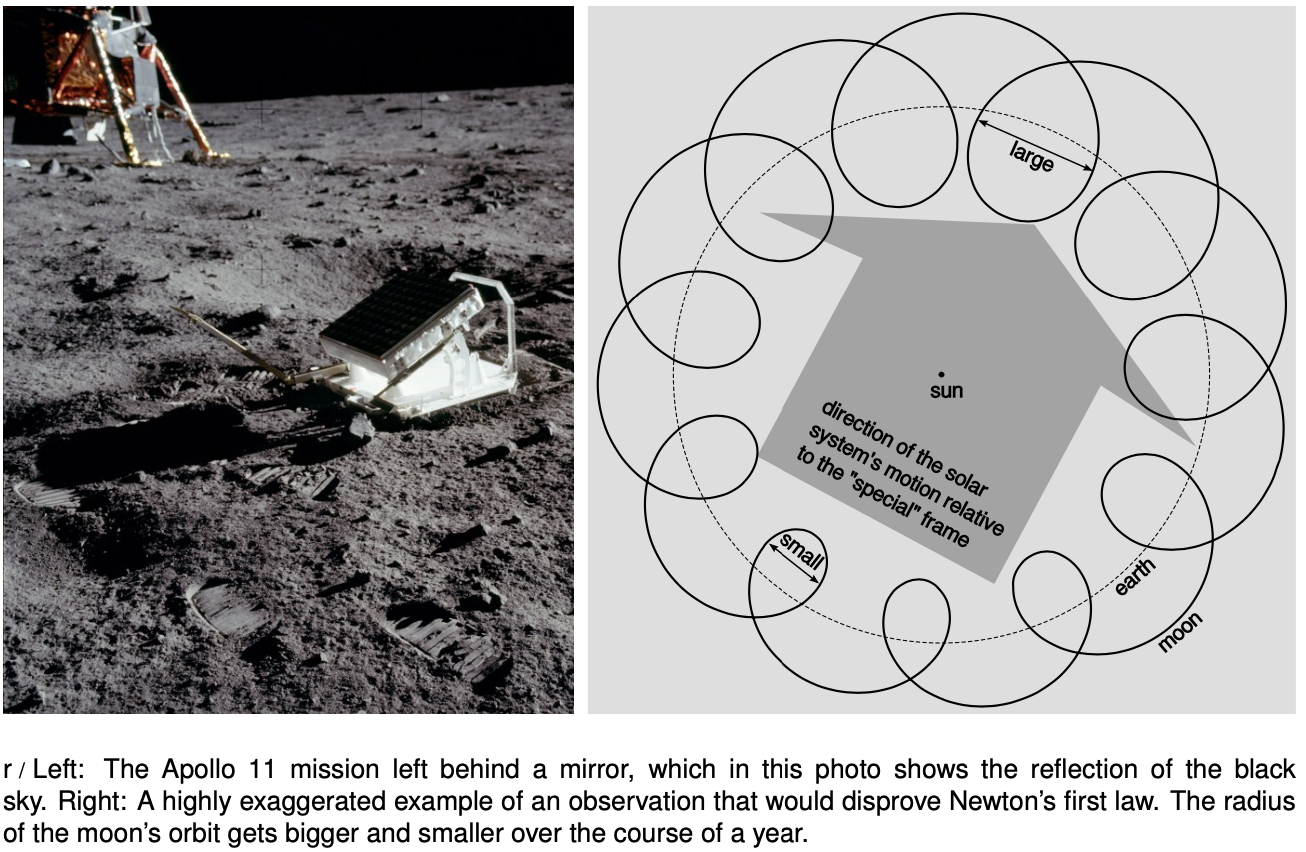LM 10.7 A gravitational test of Newton's first law Collection
10.7 A gravitational test of Newton's first law by Benjamin Crowell, Light and Matter licensed under the Creative Commons Attribution-ShareAlike license.
10.7 A gravitational test of Newton's first law (optional)
This section describes a high-precision test of Newton's first law. The left panel of figure r shows a mirror on the moon. By reflecting laser pulses from the mirror, the distance from the earth to the moon has been measured to the phenomenal precision of a few centimeters, or about one part in `10^10`. This distance changes for a variety of known reasons. The biggest effect is that the moon's orbit is not a circle but an ellipse, with its long axis about 11% longer than its short one. A variety of other effects can also be accounted for, including such exotic phenomena as the slightly nonspherical shape of the earth, and the gravitational forces of bodies as small and distant as Pluto. Suppose for simplicity that all these effects had never existed, so that the moon was initially placed in a perfectly circular orbit around the earth, and the earth in a perfectly circular orbit around the sun.

If we then observed something like what is shown in the right panel of figure r, Newton's first law would be disproved. If space itself is symmetrical in all directions, then there is no reason for the moon's orbit to poof up near the top of the diagram and contract near the bottom. The only possible explanation would be that there was some preferred frame of reference of the type envisioned by Aristotle, and that our solar system was moving relative to it. Another test for a preferred frame was described in example 3 on p. 243.
One could then imagine that the gravitational force of the earth on the moon could be affected by the moon's motion relative to this frame. The lunar laser ranging data contain no measurable effect of the type shown in figure r, so that if the moon's orbit is distorted in this way (or in a variety of other ways), the distortion must be less than a few centimeters. This constitutes a very strict upper limit on violation of Newton's first law by gravitational forces. If the first law is violated, and the violation causes a fractional change in gravity that is proportional to the velocity relative to the hypothetical preferred frame, then the change is no more than about one part in `10^7`, even if the velocity is comparable to the speed of light.
10.7 A gravitational test of Newton's first law by Benjamin Crowell, Light and Matter licensed under the Creative Commons Attribution-ShareAlike license.
Calculators and Collections
- Comments
- Attachments
- Stats
No comments |
